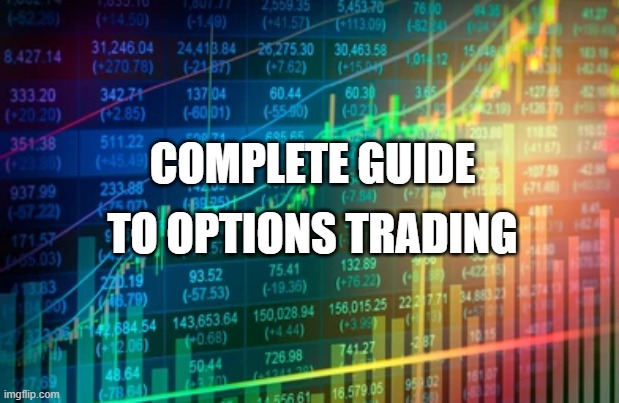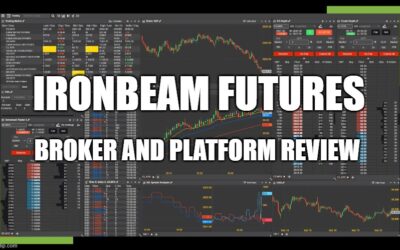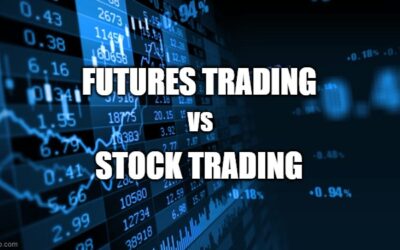Trading options can be a complex and risky endeavor, and it's important to have a solid understanding of the underlying concepts and strategies involved. In this article we are going to outline everything you need to know about getting started in options trading.
Options Trading Basics
Before you begin trading options, it's important to understand the basics of how they work. Options are contracts that give the buyer the right, but not the obligation, to buy or sell an underlying asset at a specific price (the strike price) before a certain date (the expiration date).
There are two types of options: call options and put options. In laymen's terms: if you buy calls if you are betting that a stocks price will rise in the future, and you buy puts if you believe the stocks price will decline in the future.
As simple as that sounds, there are some complexities to options trading, so read on to learn more about this investment strategy.
Common Terms in Options Trading
In this article we will be referencing a few terms which may be unfamiliar, here are the common terms you must learn to better understand options trading:
Call option: Betting on a stock price to rise in the future.
Put option: Betting on a stock price to decline in the future.
Strike price: The price at which the underlying asset can be bought or sold by the holder of an option contract.
Expiration date: The date by which an option contract must be exercised or it becomes worthless.
Premium: The price paid by the buyer of an option contract to the seller (writer) in exchange for the right to buy or sell the underlying asset.
In-the-money (ITM): A term used to describe an option that has intrinsic value. For call options, this means the strike price is below the market price of the underlying asset. For put options, this means the strike price is above the market price of the underlying asset.
Out-of-the-money (OTM): A term used to describe an option that has no intrinsic value. For call options, this means the strike price is above the market price of the underlying asset. For put options, this means the strike price is below the market price of the underlying asset.
At-the-money (ATM): A term used to describe an option whose strike price is equal to the current market price of the underlying asset.
Delta: A measure of an option's sensitivity to changes in the price of the underlying asset.
Implied volatility: An estimate of the volatility of the underlying asset, based on the current market price of the option.
Open interest: The total number of outstanding option contracts for a particular strike price and expiration date.
Liquidity: A measure of the ease with which an option can be bought or sold, based on the availability of buyers and sellers in the market.
What is a Call Option?
In options trading, a call option gives the holder (buyer) the right (but not the obligation) to buy an underlying asset at a specified price (strike price) on or before a specified date (expiration date).
When a trader or investor buys a call option, they are betting that the price of the underlying asset will rise above the strike price before the expiration date.
If this happens, the buyer of the call option can "call" the seller of the option to purchase the asset at the strike price, regardless of the market price at that time. The seller of the call option, also known as the writer, is obligated to sell the asset at the strike price if the buyer decides to exercise their option.
For example, if Apple stock is trading at $100 per share and you think it will rise to $105 in the next week, you could buy call options that expire a week from today. The value of your call options will (in theory) increase as the stock price goes up.
You have the right and ability to sell your call option contracts at anytime before the strike price and expiration date is reached at a profit or loss if you choose to do so.
What is a Put Option?
A put option is the exact opposite of a call option. A put option is the type of contract that gives the holder the right (but again, not the obligation) to sell an underlying asset at a specified price (strike price) on or before a specified date (expiration date).
When an investor buys a put option, they are essentially betting that the price of the underlying asset will fall below the strike price before the expiration date. If this happens, the buyer of the put option can "put" the asset to the seller of the option at the strike price, regardless of the market price at that time. The seller of the put option, also known as the writer, is obligated to buy the asset at the strike price if the buyer decides to exercise their option.
Put options can be used for various trading strategies, including hedging, speculation, and income generation. However, options trading is complex and risky, and investors should thoroughly understand the potential risks and rewards before engaging in this type of trading.
Like with call options, you can sell your put options anytime at or before the strike price or expiration date for a profit or loss if you choose to.
How Does the Expiration Date Work in Options?
The expiration date is a a very important element in options trading. It is the date by which an options contract must be exercised or it becomes worthless. For example, if the call option you bought is not exercised by the expiration date, the option contract ceases to exist, and the buyer no longer has the right to buy or sell the underlying asset.
It's important to know that options contracts have a limited lifespan, which is usually a few months. The expiration date for an options contract is typically the third Friday of the expiration month.
Investors have several choices when it comes to exercising an options contract before its expiration date. If the options contract is ITM (in-the-money), meaning that the strike price is favorable for the buyer, they can choose to exercise the contract and buy or sell the underlying asset at the agreed-upon strike price.
If the options contract is OTM (out-of-the-money), meaning that the strike price is not favorable for the buyer, they can choose to let the option expire worthless and avoid any further losses.
Investors should pay close attention to the expiration date of their options contracts and understand the implications of exercising or not exercising them before they expire.
What Does the Premium Mean in Options?
The premium is the price that the buyer of an option pays to the seller (writer) for the right to buy or sell an underlying asset at a specified price (strike price) on or before a specified date (expiration date).
The premium is paid upfront by the buyer of the option and is the maximum amount that they can lose if the option expires worthless.
In other words, the premium is the total dollar amount you invested to buy your options contracts.
Example of Premium
For example, if a buyer pays a premium of $100 for an Apple call option, the most they can lose is $100 if they choose not to exercise (sell) the option before the expiration date.
If the call option you bought never reaches the strike price and you choose not to sell it at a lesser loss, the option will expire worthless and you will lose the entire $100 you invested.
If you decided a few days before expiration that its unlikely Apple is going to reach your strike price, you could opt sell for less of a loss before the expiration date.
If Apple stock rises and you choose to take profits before the expiration date, you could also opt to sell your contracts for a profit.
The most important thing to note is that when buying a call or put option, the most you can lose is your premium. This is a good thing because it allows you to properly plan for risk, and you should almost always plan for the downside of losing the entire premium.
What Determines an Options Premium?
The premium is determined by a few key factors, including the current price and volatility of the underlying stock or asset, the time remaining until expiration, and the strike price.
Generally, options with a longer time until expiration and options with a strike price that is closer to the current market price of the underlying asset will have a higher premium. This is because there is more time for the price to reach the strike price target.
For example, if you bought AAPL $155 calls that expire today and the price of the stock is $140, its a lot less likely that the stock will reach $155 today, but if those calls expire 2 weeks from now, its more likely that the stock could rise towards or above your strike price.
The further the underlying stocks price gets from the strike price the more value the contracts will lose, especially as it nears the expiration date.
Why Trade Options vs Stocks?
The main benefit of options are that they don't cost as much as stocks, and so people with smaller trading accounts can make bigger moves on large-cap stocks that would normally require a lot of capital.
It could cost $150,000 to buy 1000 shares of Apple, for example, but only a few hundred dollars to buy call options. Of course this benefit doesn't come without its drawdowns.
Trading stocks if very straight forward, you buy them and sell them, or short them and cover them.
Options can be complex and there are factors that can make it difficult to profit consistently, such as time decay that can reduce the value of your contracts over time (explained later in the Greeks section of this article).
Options Trading Strategies
There are many different options trading strategies, each with its own risk-reward profile and potential uses. Here are some common options trading strategies:
Long Call
Buying a call option with the expectation that the underlying asset will increase in price. The potential profit is unlimited, while the maximum loss is limited to the premium paid for the option.
Long put
Buying a put option with the expectation that the underlying asset will decrease in price. The potential profit is limited to the strike price minus the premium paid for the option, while the maximum loss is limited to the premium paid.
Covered Call
This strategy involves selling a call option on an underlying asset that is already owned. The potential profit is limited to the premium received for the option, while the maximum loss is unlimited if the underlying asset increases significantly in price. Due to the unlimited amount of risk, this is an extremely risky strategy, however, can be very profitable if done with a proper risk management system.
Think of covered calls like shorting a stock. The most the stock can go is to zero, but it has unlimited risk to the upside.
Selling calls or "covered calls" is similar - you are shorting call options in hopes that they decline in price but have the unlimited exposure of risk if they keep going up.
Protective Put
This options strategy is buying a put option as insurance against a potential decrease in the value of an underlying asset. The potential profit is unlimited if the underlying asset increases in price, while the maximum loss is limited to the premium paid for the put option. This would be helpful if you owned long shares of Apple in the long term, but expected bad earnings and wanted to profit by buying short term puts to offset the short term draw down in your stock.
Long Straddle
Long straddles are buying a call option and a put option at the same strike price and expiration date. The potential profit is unlimited if the underlying asset moves significantly in either direction, while the maximum loss is limited to the premium paid for both options.
Short straddle
A short straddle is, you guessed it, the opposite of a protective put. A short straddle is selling a call option and a put option at the same strike price and expiration date. The potential profit is limited to the premium received for both options, while the maximum loss is unlimited if the underlying asset moves significantly in either direction. This is EXTREMELY risky.
Butterfly spread
The butterfly spread is buying a call option and a put option at one strike price, and selling two call options and two put options at two different strike prices, all with the same expiration date. The potential profit is limited to the difference between the strike prices minus the premium paid, while the maximum loss is limited to the premium paid for the options.
Options Greeks
Now that we've covered the different types of options strategies, lets get into more complex topics such as Greeks.
Options Greeks are mathematical values that are used to measure the sensitivity of an option's price to various factors, such as changes in the underlying asset price, time decay, volatility, and interest rates. The Greeks help traders and investors to better understand and manage the risks associated with options trading.
There are 4 main Greeks in options, we will cover them each below:
What is “Delta” in Options Greeks?
Delta is one of the most important Greeks in options trading. It measures the sensitivity of an option's price to changes in the price of the underlying stock/asset. Delta is the rate of change of an option's price for a $1 change in the price of the underlying stock/asset.
Delta values range from 0 to 1 for call options, and from 0 to -1 for put options. A delta of 0 means that the option's price is not affected by changes in the underlying asset price, while a delta of 1 means that the option's price will move in tandem with the underlying asset price. A delta of -1 means that the option's price will move in the opposite direction of the underlying asset price.
If a call option has a delta of 0.5, it means that if the underlying asset price increases by $1, the option's price will increase by $0.5. Similarly, if a put option has a delta of -0.5, it means that if the underlying asset price decreases by $1, the option's price will increase by $0.5.
Delta can be used to estimate the probability of an option expiring in the money. For example, a call option with a delta of 0.5 has a 50% chance of expiring in the money, while a put option with a delta of -0.5 has a 50% chance of expiring in the money.
Overall, delta is a useful tool for options traders and investors, as it can help them to manage risk, determine the potential profitability of an options trade, and make informed trading decisions.
What is “Gamma” in Options Greeks?
Gamma measures the rate of change of an option's delta in response to changes in the price of the underlying asset. In other words, gamma measures how much the delta of an option changes for each $1 change in the price of the underlying asset.
Gamma is positive for both call options and put options. It increases as the option gets closer to expiration and as the underlying asset price gets closer to the strike price of the option. Gamma is highest for at-the-money options and decreases as the option becomes either in-the-money or out-of-the-money.
For example, let's say that a call option has a delta of 0.5 and a gamma of 0.1. If the underlying asset price increases by $1, the option's delta will increase by 0.1 to 0.6. Similarly, if the underlying asset price decreases by $1, the option's delta will decrease by 0.1 to 0.4.
Gamma is important for options traders because it can help them to manage the risks associated with their options positions. Specifically, gamma can be used to estimate the potential changes in an option's delta and, therefore, the potential changes in the option's value. This information can be used to adjust an options portfolio to account for changes in market conditions and to take advantage of market opportunities.
Overall, gamma is an important measure of an option's sensitivity to changes in the underlying asset price, and it should be considered when making trading decisions.
What is “Theta” in Options Greeks?
Theta measures the rate of "time decay" of an option's value as the expiration date approaches. Theta represents the change in the price of an option per unit of time, assuming all other factors remain constant.
Theta is usually negative for both call options and put options. This means that the option loses value as time passes. Theta tends to increase as the option gets closer to expiration, and it is highest for at-the-money options.
This can be a disadvantage to trading options, for example, if you buy a call option and the underlying stock trades sideways with no significant moves in either direction, your contracts will likely lose value due to the time decay.
Let's say that a call option has a price of $5 and a theta of -0.25. If all other factors remain constant, the option's price will decrease by $0.25 per day as it approaches expiration. This means that if the option is held for 10 days, its value will decrease by $2.50 due to time decay.
Theta is important for options traders because it can help them to manage the risks associated with their options positions. Specifically, theta can be used to estimate the potential losses due to time decay, and to adjust an options portfolio to account for changes in market conditions.
Overall, theta is an important measure of an option's sensitivity to time decay, and it should be considered when making options trading decisions. It is important to note, however, that other Greeks such as delta and gamma can also have a significant impact on an option's value, and these factors should be considered in conjunction with theta when making options trading decisions.
What is “Vega” in Options Greeks?
Vega is the last greek we are going to cover in this article. It measures the sensitivity of an option's price to changes in the volatility of the underlying asset. Specifically, vega is the rate of change of an option's price for a 1% change in the implied volatility of the underlying asset.
Vega is usually positive for both call options and put options. This means that the option's price increases as volatility increases and decreases as volatility decreases. Vega tends to be higher for options with longer expiration times and at-the-money strike prices.
Let's say that a call option has a price of $5 and a vega of 0.30. If the implied volatility of the underlying asset increases by 1%, the option's price will increase by $0.30, all other factors remaining constant. Similarly, if the implied volatility of the underlying asset decreases by 1%, the option's price will decrease by $0.30.
How Should I Get Started in Options Trading?
The best way to learn how to trade options is by watching an experienced trader doing it and asking questions and gaining insights by watching his experiences.
You can find live streams and chat rooms that have dedicated options trading channels to help you learn more. It is important, however, that you are sure that the information you are receiving is from a credible source and that the educator has experience in options trading.
We also recommend paper trading options for a period of time to see how your strategies perform before trading on a live account with real money on the line. Practice makes perfect! Use a paper trading account to learn how to trade options before you put your hard earned money on the line.
Options trading is risky, but when done properly with a good strategy and risk management system you will greatly increase your odds of success, and it could be an asset to your trading arsenal.




